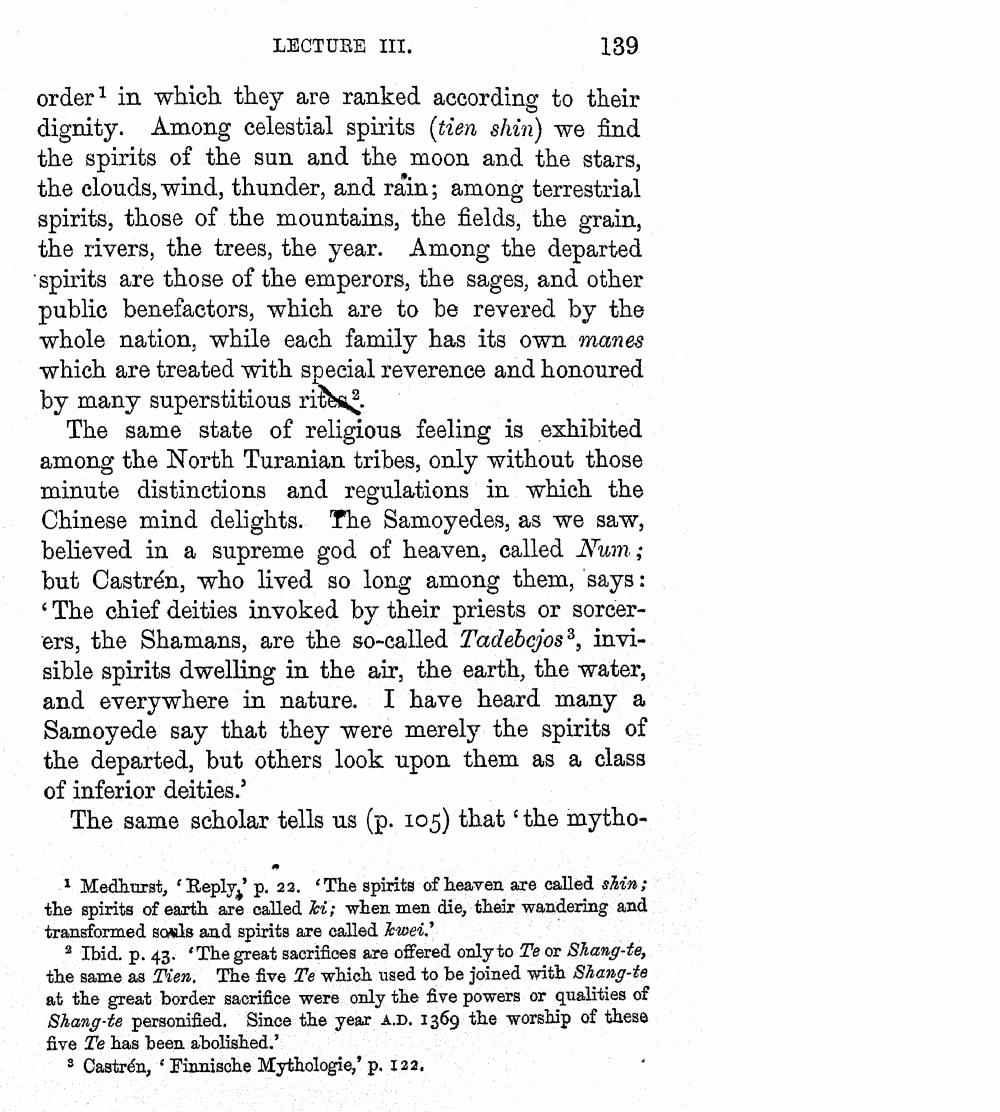________________
LECTURE III.
139 order in which they are ranked according to their dignity. Among celestial spirits (tien shin) we find the spirits of the sun and the moon and the stars, the clouds, wind, thunder, and rain; among terrestrial spirits, those of the mountains, the fields, the grain, the rivers, the trees, the year. Among the departed 'spirits are those of the emperors, the sages, and other public benefactors, which are to be revered by the whole nation, while each family has its own manes which are treated with special reverence and honoured by many superstitious riten? .
The same state of religious feeling is exhibited among the North Turanian tribes, only without those minute distinctions and regulations in which the Chinese mind delights. The Samoyedes, as we saw, believed in a supreme god of heaven, called Num; but Castrén, who lived so long among them, says:
The chief deities invoked by their priests or sorcerers, the Shamans, are the so-called Tadebcjos, invisible spirits dwelling in the air, the earth, the water, and everywhere in nature. I have heard many a Samoyede say that they were merely the spirits of the departed, but others look upon them as a class of inferior deities.'
The same scholar tells us (p. 105) that “the mytho
1 Medhurst, Reply,' p. 22. The spirits of heaven are called shin; the spirits of earth are called ki; when men die, their wandering and transformed souls and spirits are called kwei'
3 Ibid. p. 43. The great sacrifices are offered only to Te or Shang-te, the same as Tien. The five Te which used to be joined with Shang-te at the great border sacrifice were only the five powers or qualities of Shang-te personified. Since the year A.D. 1369 the worship of these five Te has been abolished.'
s Castrén, Finnische Mythologie,' p. 122.




